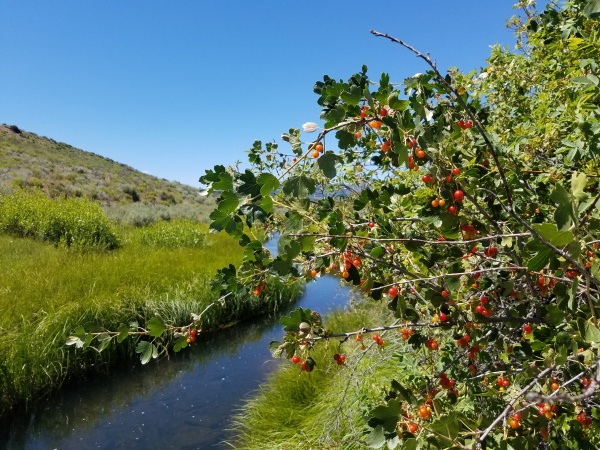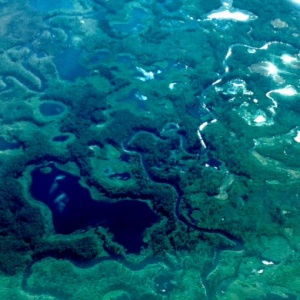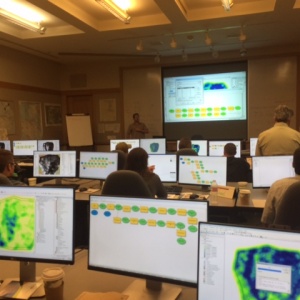I’m pretty sure it’s physically impossible for a month to pass so quickly, but here I am! I’m pretty sure I blinked about twice before July was upon me. I’ve had a quick, somewhat stressful, and really rewarding month.
My crew mate and I haven’t slowed down one bit, having just completed our 22nd collection (which takes us well over the halfway point to our target number)! We’ve gotten a ton of good forb species, as well as some grasses and shrubs. Things are just starting to slow down, with the desert turning brown and crispy. Some of the later blooming asters and buckwheats will round out our forb collections, and the grasses are starting to seed out like crazy. I think we will have a strong couple of months ahead of us!
- Checking whether the Eriogonum ovalifolium had viable seed required a dissecting scope.
- Ribes aureum. As tasty as it is beautiful! Our first fleshy fruit collection.
Aside from seed collecting, my crew mate and I are also performing botanical clearances for proposed developments (troughs, water pipelines, etc.) on BLM land. Essentially, we take a species-level inventory of the flora present at the project site. The presence of special status species or noxious weeds at the site then informs how the project is implemented; if either are present, mitigation may be deemed necessary before the project can take place. These clearances have really helped me brush up on my ID skills and they have helped us discover good collection sites as well.

Calochortus macrocarpus – sagebrush mariposa lily
With so many populations seeding out between several sites, I’m sure I will have an equally busy, wild, and wonderful month before my next post! I’m still astounded at how much I’ve learned in such a short time. This experience is exactly what I needed, and I’m excited to see what it keeps bringing!

Smith Rock, outside of Bend, OR
Brennan Davis, BLM – Lakeview, OR








































